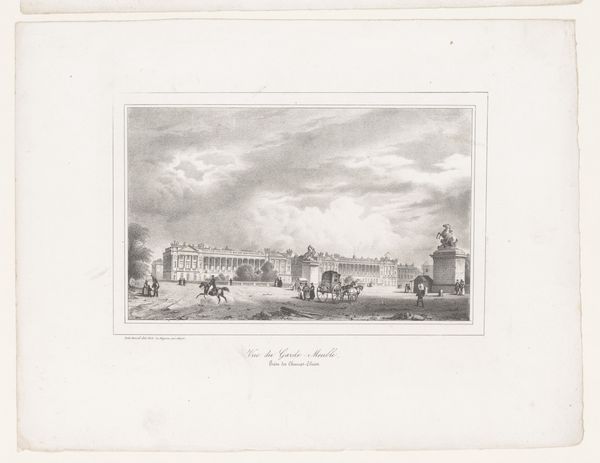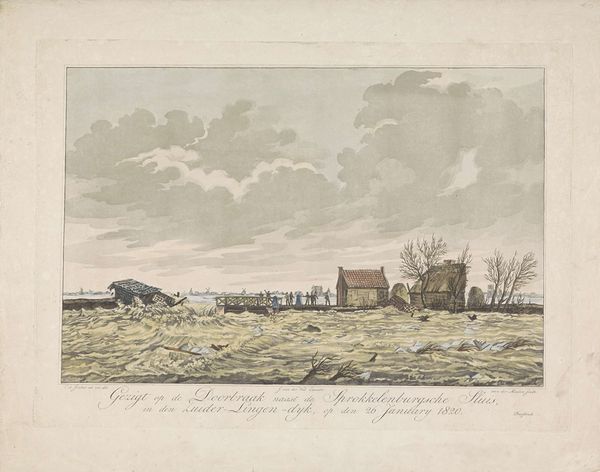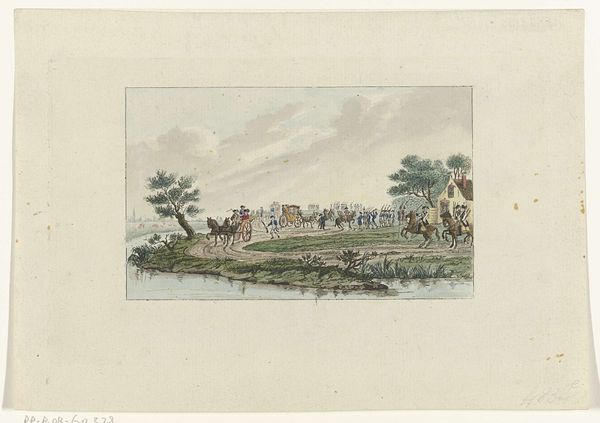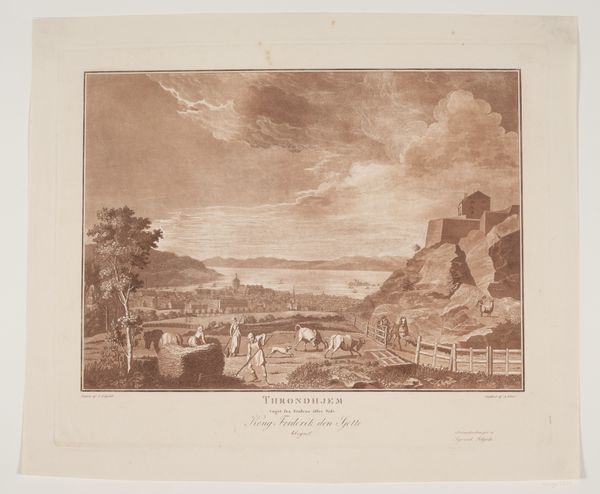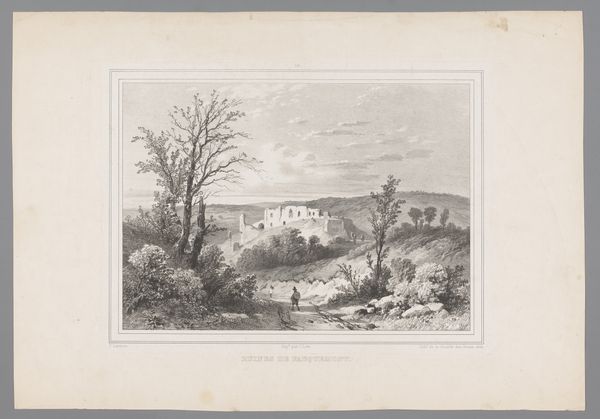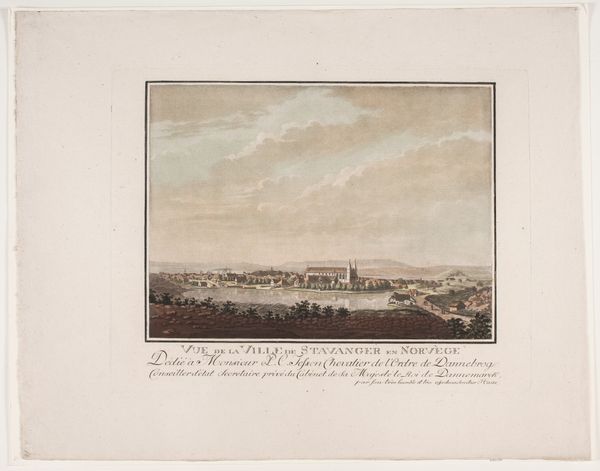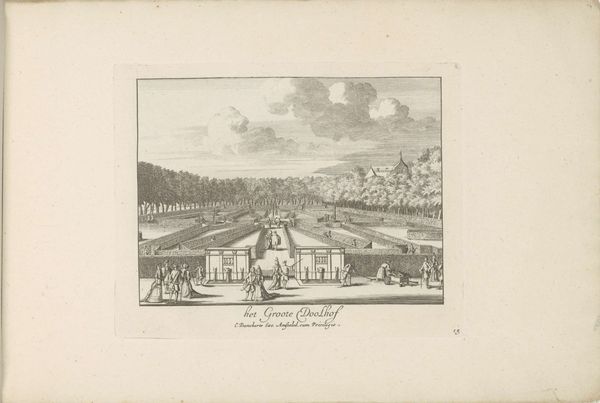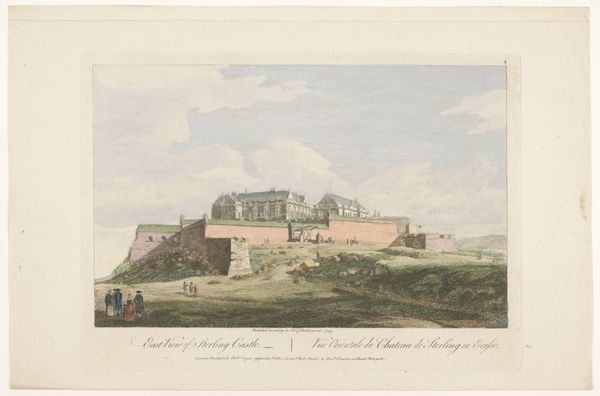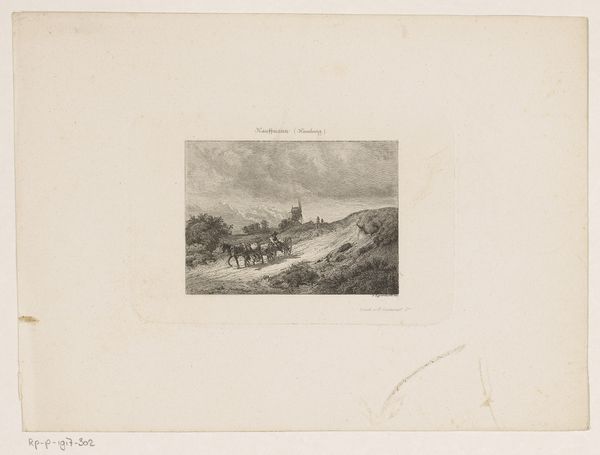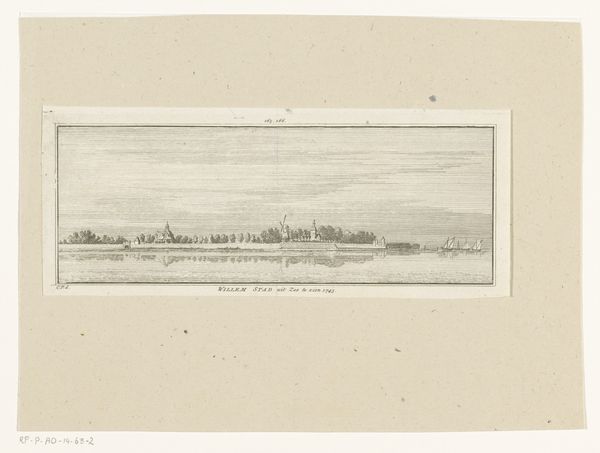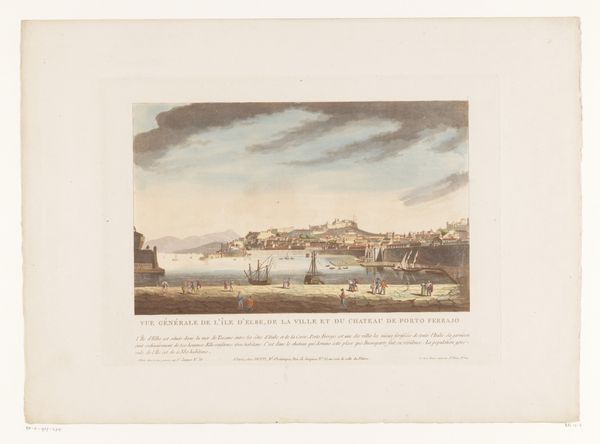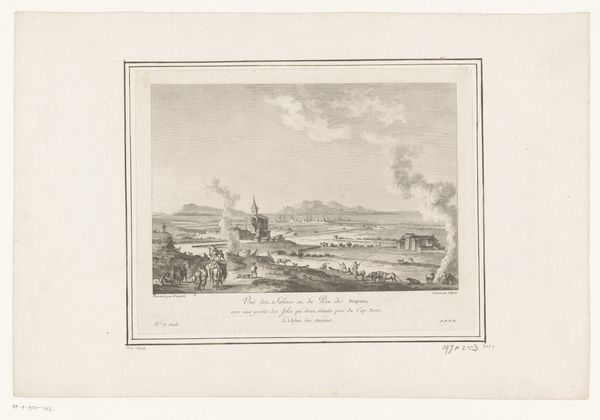
drawing, plein-air, watercolor
#
drawing
#
plein-air
#
landscape
#
watercolor
#
romanticism
#
cityscape
#
genre-painting
#
watercolor
Dimensions: height 177 mm, width 250 mm
Copyright: Rijks Museum: Open Domain
Roelof van der Meulen made this print of the bathhouse of Scheveningen using etching and possibly some aquatint. These are printmaking processes that allow for the creation of multiple images, and rely on acid to ‘bite’ into a metal plate. Look closely, and you can see how the acid has created fine lines and textures, especially in the sky and the facade of the bathhouse. The print is not just a picture but an artifact of a specific set of industrial processes. It speaks to a moment in the history of image-making when reproducibility was becoming increasingly important, thanks to new industrial and chemical technologies. Consider the labor involved: from the mining of metals, to the production of acids, to the skilled work of the etcher himself. This print invites us to think about the social and economic context in which it was made, and the many hands that contributed to its creation. By looking at this artwork, we see it not just as a pretty picture, but as a testament to the power of materials, making, and context.
Comments
No comments
Be the first to comment and join the conversation on the ultimate creative platform.

